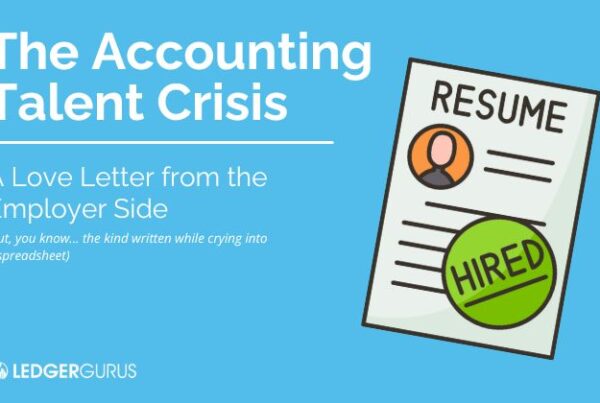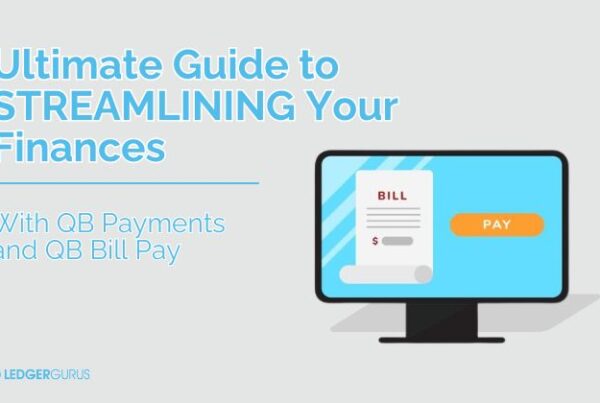 With a few days left in the year, we’ve created a checklist of key things to do for your year-end accounting. Some of these are simple and some are complex. Some MUST be done by Dec 31st and others can wait until tax time. All should be considered.
With a few days left in the year, we’ve created a checklist of key things to do for your year-end accounting. Some of these are simple and some are complex. Some MUST be done by Dec 31st and others can wait until tax time. All should be considered.
We’ll cover 7 main things to focus on as you finish up your year-end accounting:
- Update Employee Addresses
- Send out 1099s
- Travel Expenses Reimbursement
- Prepaid Expenses Accrual
- Dead AR
- Bonuses
- Year-End Purchases
Focus #1 – Update Employee Addresses
Next month you (or your payroll company) will be sending W-2s to all your employees, and you need to make sure they go to the right place. People move throughout the year, so make sure you update their address.
Pro-tip – If you are using a modern payroll system that distributes W-2s online, have your employees sign an electronic access consent agreement and you can send them their W-2 electronically and save a stamp and trees!
Focus #2 – Send out 1099s
For vendors, there are several rules that will determine if you need to send them a 1099. The most fundamental rule is that if you paid that person or business more than $600, you must send them a 1099.
For more information about W-2 vs. 1099 employees, watch this video or read this blog article.
Focus #3 – Travel Expenses Reimbursement
If you submit taxes using cash-based accounting, reimbursements MUST BE DONE by Dec 31st if you want to deduct those expenses as part of your tax return.
Make sure you start the new year with a clean slate and don’t have reimbursements bleeding over into the next year. Tell employees and owners to get their expense reports in so they can be reimbursed. It’ll make them happy to have the money back and you happy to start the new year with clean books.
Focus #4 – Prepaid Expense Accruals
If you’re doing accrual-based accounting and you haven’t been recognizing your prepaid expenses (for example annual software subscriptions), you’ll have a false sense of profitability on the year.
You need to apply the prepaid expenses from your balance sheet to your Profit & Loss Statement (aka Income Statement or P&L). Ideally this is done on a monthly basis.
Now is a good time to correct those mistakes.
To learn more about the P&L statement and what it shows you, watch How to Read and Analyze Your eCommerce Income Statement by LedgerGurus CEO, Brittany Brown. She does a great job of explaining what this statement can tell you and how to read it. If you’d rather read, click here for the corresponding blog article.
Focus #5 – Dead AR
If it is older than 90 days (and definitely if it’s older than 180 days), now is a good time to ask yourself if that AR will really be collected.
You need to decide to either send it to collections AND/OR dispose of that debt. Otherwise, you’re creating a false financial position that will create more than just a minor illusion over time.
To learn more about balance sheets and what they are really saying (including a little blurb about what can happen with AR on your books over time), watch How to Read and Analyze Your eCommerce Balance Sheet or read the blog article here.
Focus #6 – Bonuses
Year-end is a great time to pass out bonuses for all your employees’ hard work over the year.
If you are using cash-based tax reporting, THIS MUST BE DONE BY 12/31.
If you are using accrual-based accounting, you have a bit more wiggle room. You can accrue those bonuses, and you have 2 ½ months to pay them out as long as they were earned in 2020.
If you’d like to read what the IRS has to say on the matter, click here.
Focus #7 – Year-End Purchases
To minimize your tax burden, it’s a common strategy to incur expenses at the end of the year. This is not a bad idea, but you need to be thoughtful.
In order to affect your tax position, these need to be purchases that will hit the profit and loss statement. Common year-end purchase examples include:
- Bonuses
- Travel
- Flights
- Prepaying hotels
- Office Supplies
A word of caution – be aware that purchases hitting the balance sheet may not affect your tax position.
One example is inventory. This needs to hit your P&L as Cost of Goods Sold (COGS) when you sell the product, not when you buy it. That’s why this is not a good purchase for trying to affect your tax position at the end of the year.
Another example is capitalized equipment, such as vehicles and machines
- Be aware that these will hit the balance sheet and then go to the P&L via depreciation.
- This depreciation will show up over several years, not all in one year.
Nothing is worse than depleting your cash in the hopes of reducing taxes only to find it does not. We’ve seen customers make this mistake in the past. Don’t make the same mistake!
Year-end Accounting Conclusion
If you pay attention to this year-end accounting checklist, you’ll be better off going into the new year.
If you are an ecommerce company and you’d like to see a year-end checklist specifically for sales tax, click here to download.



